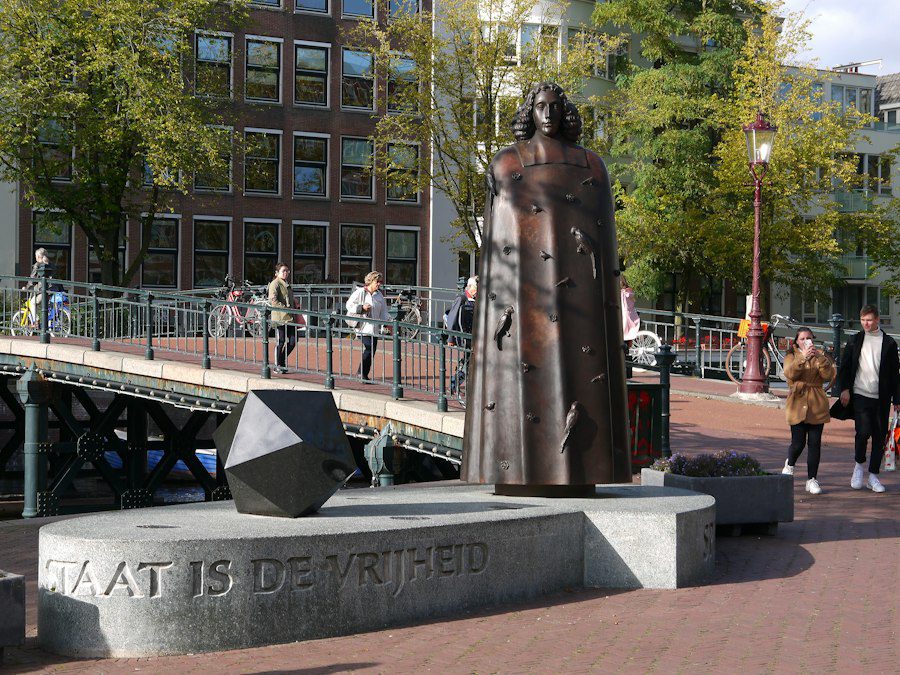The Hieroglyphic Luwian language originated in the second millennium BCE and was used by the Luwian people in ancient Anatolia. It developed alongside other Anatolian languages such as Hittite and Palaic. The language was primarily used for religious and monumental inscriptions, as well as royal and administrative documents.
During the Late Bronze Age, the Hittite Empire expanded its influence over much of Anatolia, including areas where the Luwians lived. As a result, the Hieroglyphic Luwian language came under the influence of Hittite and adopted some Hittite loanwords and grammatical features.
Features of Hieroglyphic Luwian Language
The writing system of the Hieroglyphic Luwian language is based on a set of hieroglyphic symbols that represent syllables or words. The script consists of over 500 signs, including logograms (symbols that represent whole words) and phonograms (symbols that represent individual sounds). The script is read from left to right, and the signs can be arranged in vertical or horizontal lines.
The grammar and syntax of the Hieroglyphic Luwian language are similar to other Anatolian languages. It is an agglutinative language, meaning that words are formed by adding suffixes to a root. The language has a complex system of verb conjugation and noun declension, with different forms for tense, mood, and person.
The vocabulary of the Hieroglyphic Luwian language is rich and diverse, with words borrowed from other Anatolian languages as well as from neighboring cultures such as the Hittites and the Assyrians. The pronunciation of the language is not known with certainty, but it is believed to have been similar to other Anatolian languages.
Importance of Hieroglyphic Luwian Language
The Hieroglyphic Luwian language plays a crucial role in understanding ancient Anatolian culture. The inscriptions and texts written in this language provide valuable information about the religious beliefs, social structure, and political history of the Luwian people. They also shed light on the interactions between different cultures in ancient Anatolia.
Furthermore, the study of the Hieroglyphic Luwian language has made significant contributions to the field of linguistics. It has helped linguists understand the development and evolution of the Indo-European language family, as well as the relationships between different branches and subgroups. By comparing the vocabulary, grammar, and syntax of Hieroglyphic Luwian with other ancient languages, linguists have been able to reconstruct the proto-language from which they all descended.
Translation of Hieroglyphic Luwian Language
Translating the Hieroglyphic Luwian language poses several challenges due to the limited number of available texts and the difficulty in deciphering the script. However, through a combination of linguistic analysis, comparative studies, and contextual clues, scholars have been able to make significant progress in translating and understanding the language.
Various techniques and methods are used in the translation of Hieroglyphic Luwian texts. These include comparing the language with other Anatolian languages, analyzing the grammar and syntax of the texts, and studying the cultural and historical context in which they were written. The use of computer programs and algorithms has also been helpful in deciphering the script and identifying patterns in the language.
Examples of translated Hieroglyphic Luwian texts include religious inscriptions, royal decrees, and administrative documents. These texts provide valuable insights into the religious practices, political organization, and social structure of ancient Anatolia.
Challenges in translating Hieroglyphic Luwian Language
One of the main challenges in translating the Hieroglyphic Luwian language is the limited number of available texts. Many inscriptions and documents have been lost or destroyed over time, making it difficult to get a complete picture of the language and its usage. This scarcity of texts also makes it challenging to identify patterns and establish a comprehensive understanding of the grammar and vocabulary.
Another challenge is the difficulty in deciphering the script. The Hieroglyphic Luwian script is complex and contains over 500 signs, some of which have multiple meanings or can be read in different ways. Deciphering these signs requires a deep understanding of the language, as well as knowledge of other Anatolian scripts and languages.
Role of Language Experts in Hieroglyphic Luwian Language Translation

Language experts play a crucial role in deciphering and translating Hieroglyphic Luwian texts. Their expertise in linguistics, ancient Anatolian culture, and comparative studies is essential for understanding the language and its context.
Language experts use their knowledge of other Anatolian languages, such as Hittite and Palaic, to compare and analyze the grammar, vocabulary, and syntax of Hieroglyphic Luwian. They also study the cultural and historical context in which the texts were written to gain insights into their meaning and significance.
Furthermore, language experts collaborate with archaeologists, historians, and other scholars to gather and analyze new texts, as well as to share their findings and interpretations. This interdisciplinary approach is crucial for advancing our understanding of the Hieroglyphic Luwian language and its role in ancient Anatolian culture.
24x7offshoring and Hieroglyphic Luwian Language Translation
24x7offshoring is a leading provider of translation services, including the translation of ancient languages such as Hieroglyphic Luwian. With a team of experienced linguists and language experts, 24x7offshoring offers efficient and accurate translation services for a wide range of texts and documents.
The company uses state-of-the-art technology and tools to aid in the translation process, including computer programs and algorithms that can assist in deciphering the Hieroglyphic Luwian script. These tools, combined with the expertise of the translators, ensure that the translations are accurate and reliable.
24x7offshoring also understands the importance of preserving cultural heritage and works closely with archaeologists, historians, and other scholars to ensure that the translations are culturally sensitive and accurate. The company is committed to providing high-quality translations that contribute to the advancement of knowledge in linguistics and ancient Anatolian culture.
Future of Hieroglyphic Luwian Language
The future of the Hieroglyphic Luwian language holds great potential for new discoveries and translations. As more archaeological sites are excavated and new texts are found, our understanding of the language will continue to expand.
Advancements in technology, such as artificial intelligence and machine learning, may also play a role in deciphering and translating Hieroglyphic Luwian texts. These tools can assist in identifying patterns, analyzing the grammar and syntax, and making connections with other languages.
The continued study of the Hieroglyphic Luwian language is essential for advancing our knowledge of ancient Anatolian culture and the development of the Indo-European language family. It provides valuable insights into the history, religion, and social structure of the Luwian people, as well as their interactions with other cultures in ancient Anatolia.
The Significance of Hieroglyphic Luwian Language in Linguistics
In conclusion, the Hieroglyphic Luwian language is a significant language in linguistics due to its role in understanding ancient Anatolian culture and its contribution to the study of Indo-European languages. Despite the challenges in translating and deciphering the language, scholars have made significant progress in understanding its grammar, vocabulary, and syntax.
Language experts play a crucial role in deciphering and translating Hieroglyphic Luwian texts, using their expertise in linguistics and ancient Anatolian culture. Companies like 24x7offshoring provide efficient and accurate translation services for Hieroglyphic Luwian texts, contributing to the advancement of knowledge in linguistics and ancient Anatolian culture.
The future of the Hieroglyphic Luwian language holds great potential for new discoveries and translations. As more texts are found and technology advances, our understanding of the language will continue to expand. The study of this language is essential for understanding ancient Anatolian culture and the development of the Indo-European language family.
If you’re interested in the Hieroglyphic Luwian Language, you might also enjoy reading about the fascinating world of data annotation. Data annotation plays a crucial role in machine learning and natural language processing (NLP) tasks. It involves labeling and categorizing data to train algorithms and improve their accuracy. One specific type of data annotation is named entity recognition, which focuses on identifying and classifying named entities within text. To learn more about this important aspect of data annotation, check out this informative article on name entity recognition.
FAQs
What is Hieroglyphic Luwian Language?
Hieroglyphic Luwian is an extinct language that was used in ancient Anatolia (modern-day Turkey) during the Bronze Age. It was written using a script of hieroglyphs, which were used to represent both words and sounds.
When was Hieroglyphic Luwian Language used?
Hieroglyphic Luwian was used between the 17th and 8th centuries BCE, during the Bronze Age in Anatolia. It was used by the Luwian people, who were one of the major ethnic groups in the region at the time.
What is the significance of Hieroglyphic Luwian Language?
Hieroglyphic Luwian is significant because it provides valuable insights into the history and culture of ancient Anatolia. It was used to record important events, such as treaties and religious ceremonies, and also contains information about the Luwian language and its relationship to other ancient languages.
How was Hieroglyphic Luwian Language deciphered?
The decipherment of Hieroglyphic Luwian was a long and complex process that involved the work of many scholars over several decades. The breakthrough came in the 1930s, when a German scholar named Emil Forrer was able to identify the names of several Luwian kings in inscriptions found at Hattusa, the capital of the Hittite Empire.
What is the relationship between Hieroglyphic Luwian Language and Hittite?
Hieroglyphic Luwian is closely related to Hittite, which was another major language spoken in ancient Anatolia. The two languages share many similarities in terms of grammar, vocabulary, and syntax, and were often used together in official documents and inscriptions.
What are some examples of Hieroglyphic Luwian inscriptions?
Some of the most famous Hieroglyphic Luwian inscriptions include the inscriptions found at Hattusa, which include the names of several Luwian kings, as well as information about religious ceremonies and treaties. Other examples include the inscriptions found at Karatepe, which contain a bilingual text in Hieroglyphic Luwian and Phoenician.
